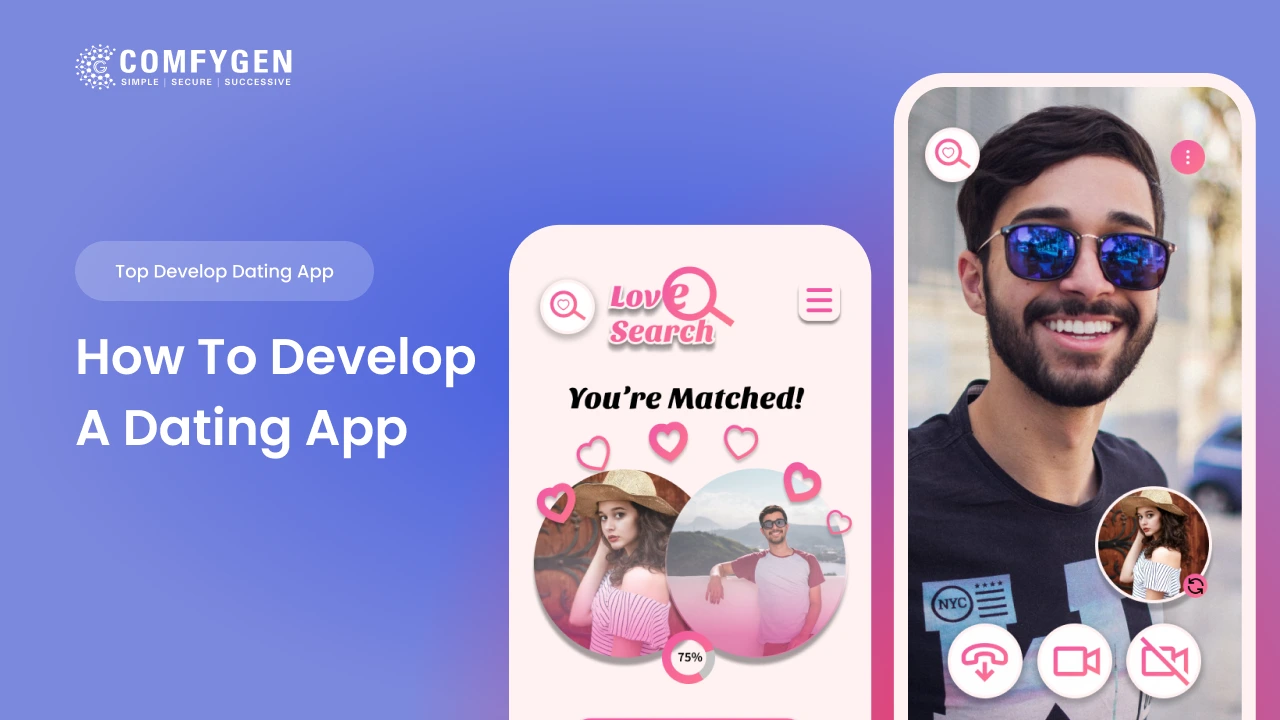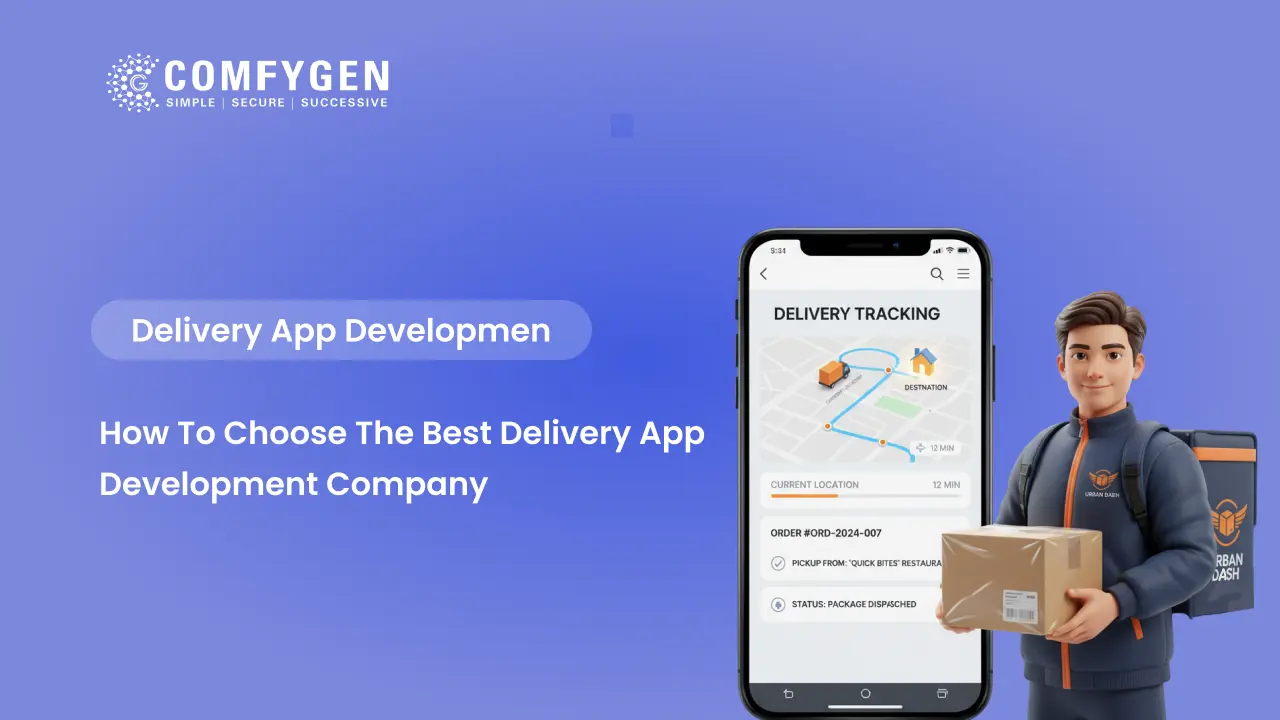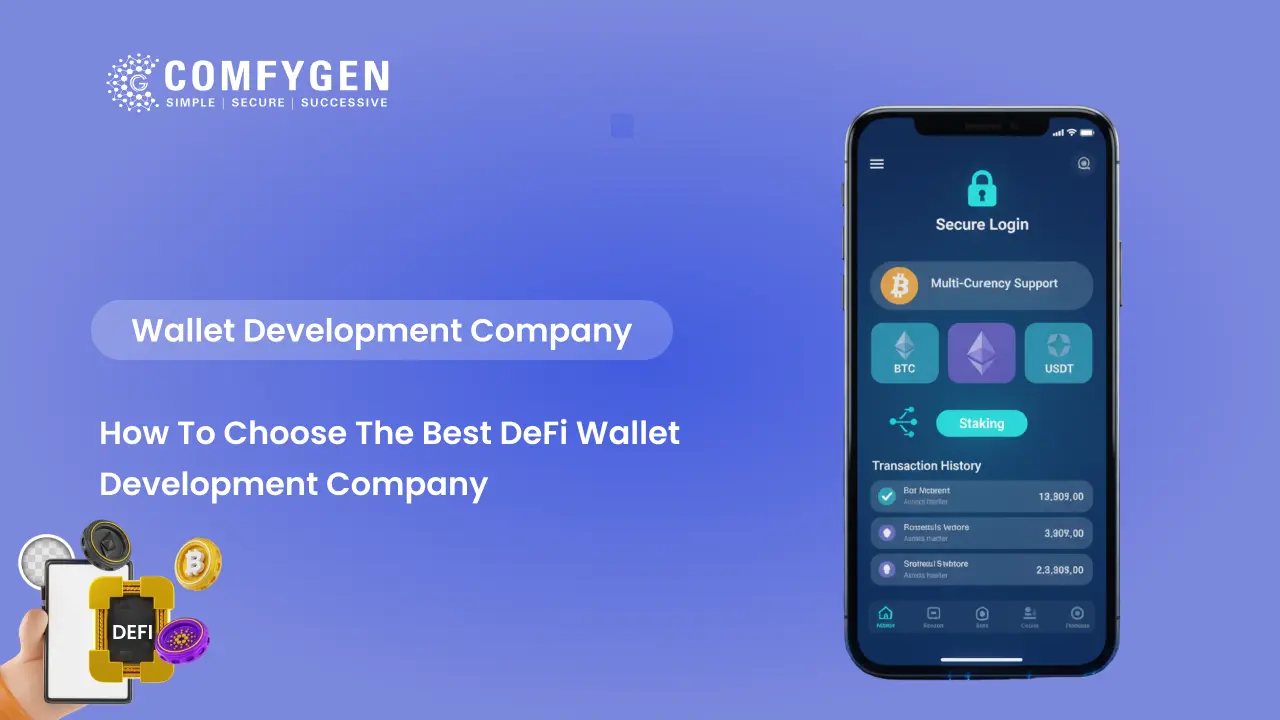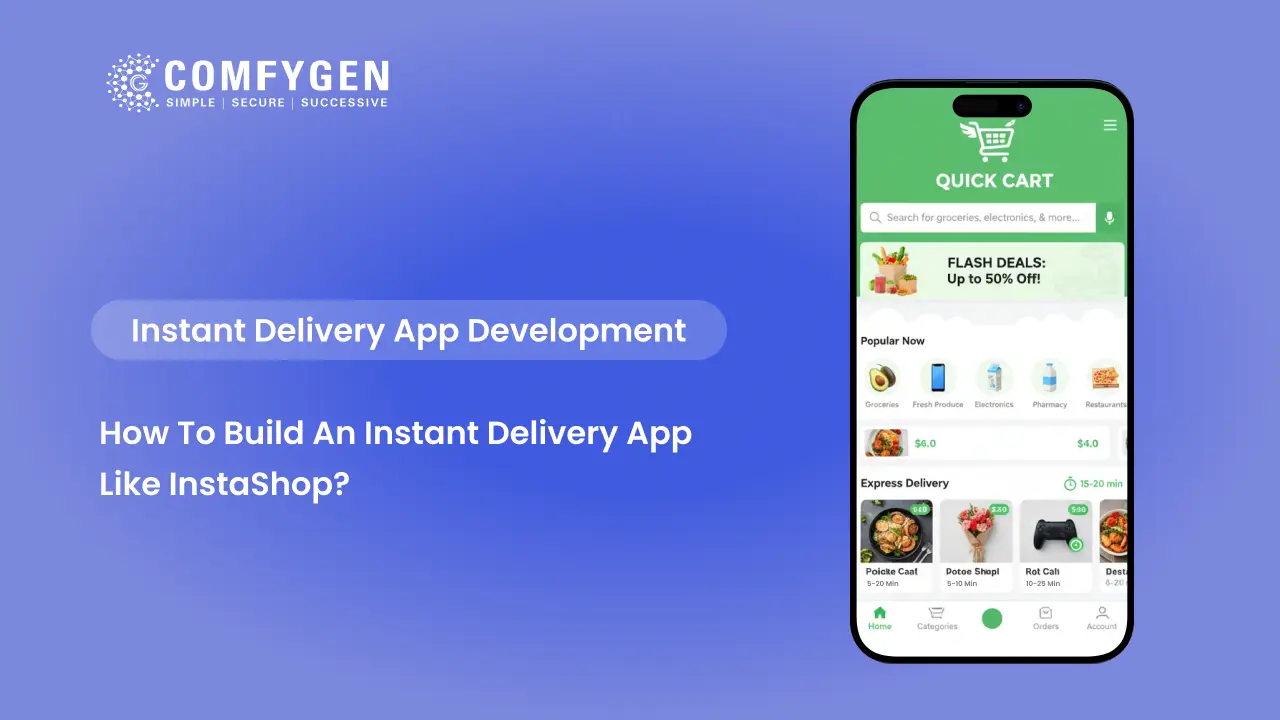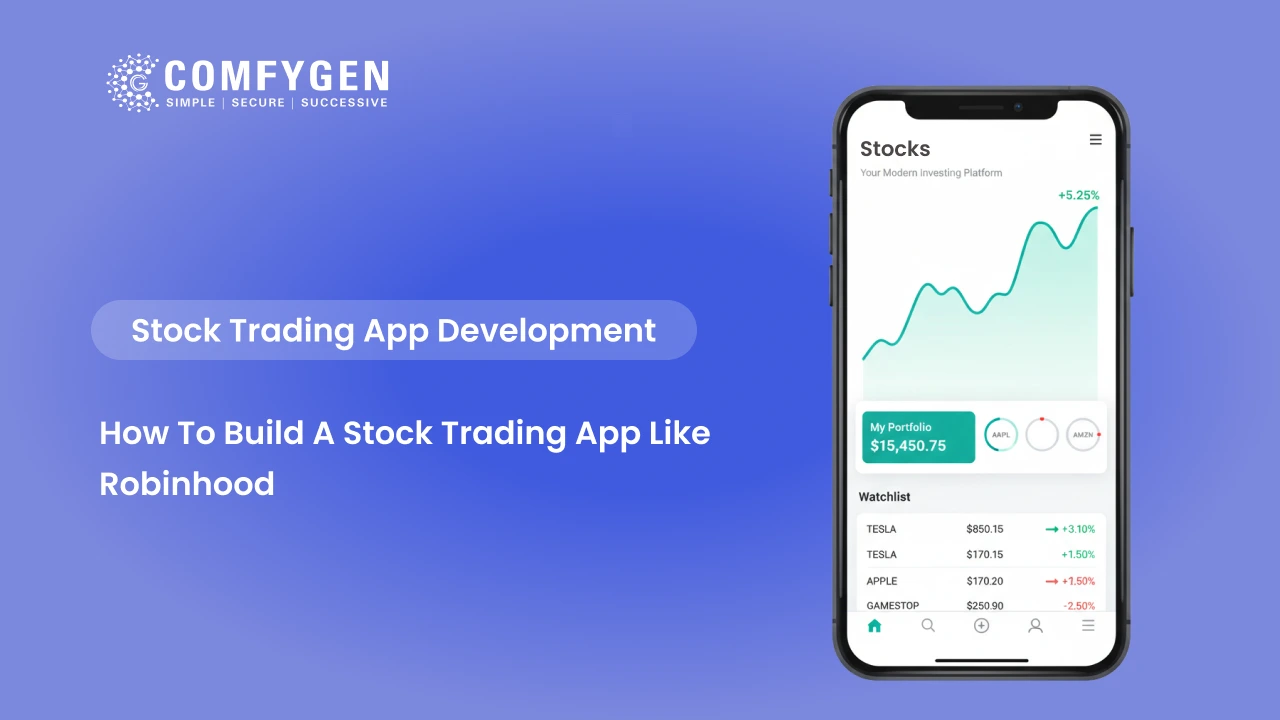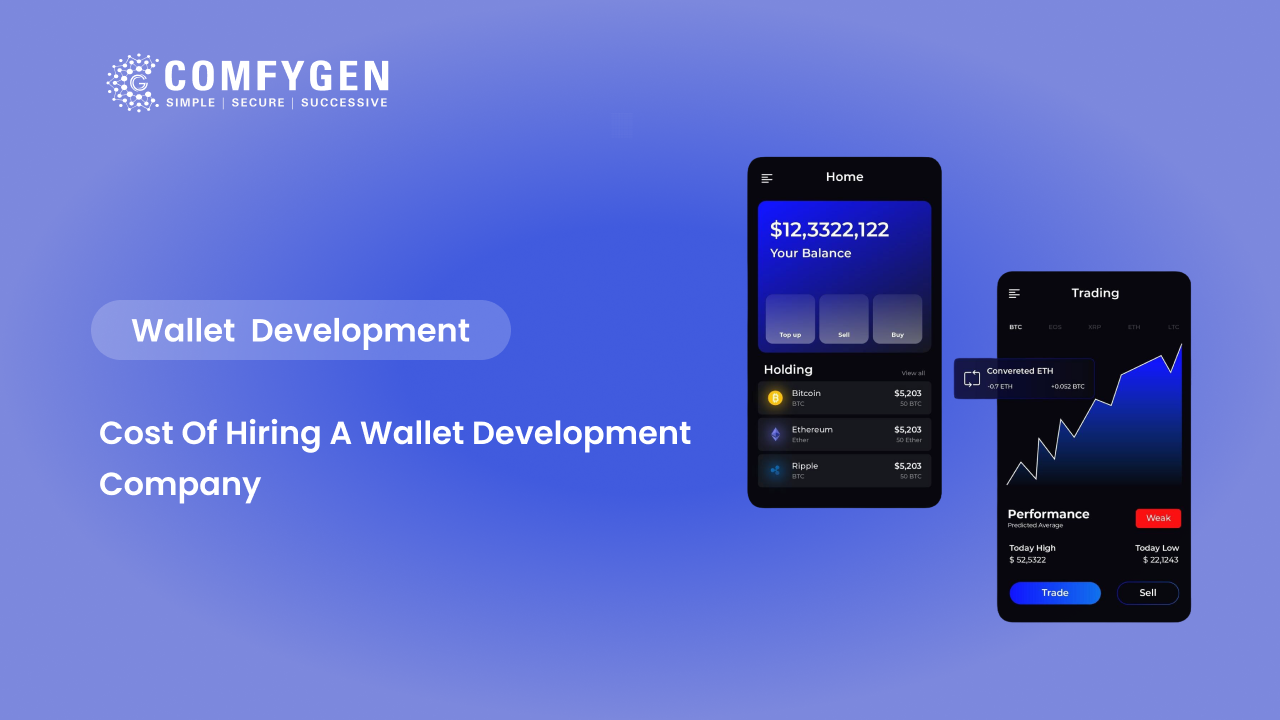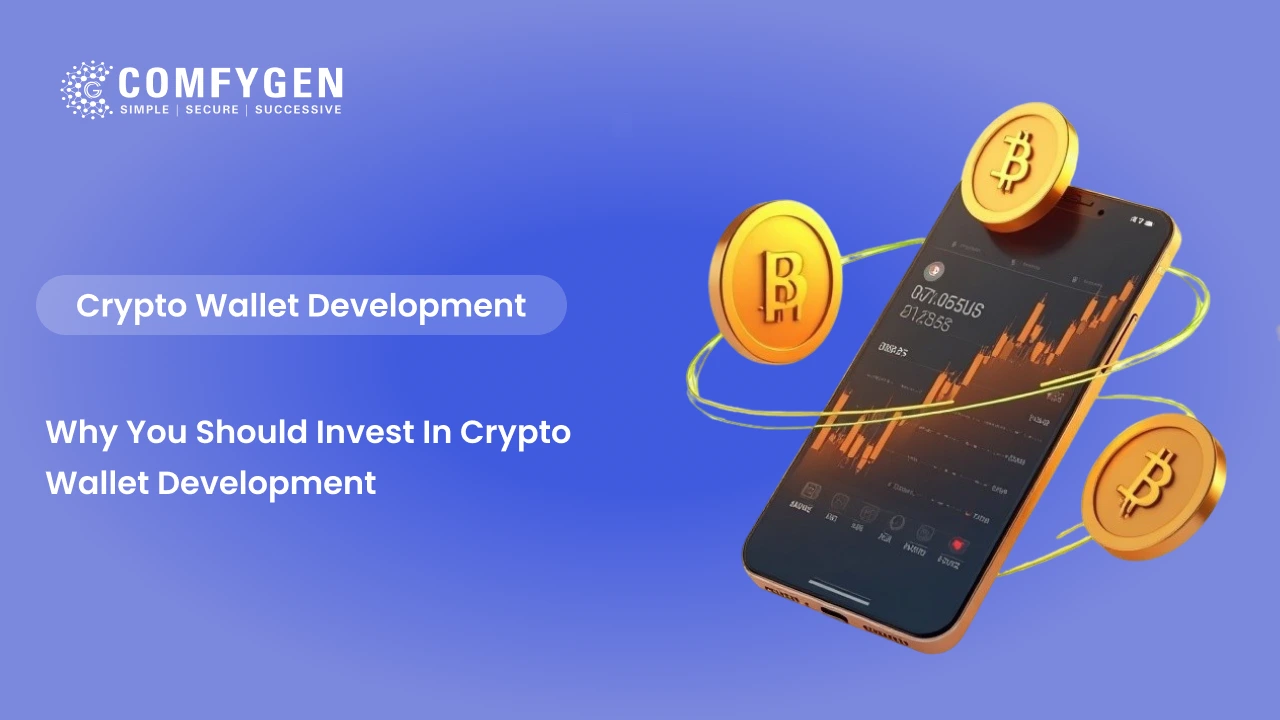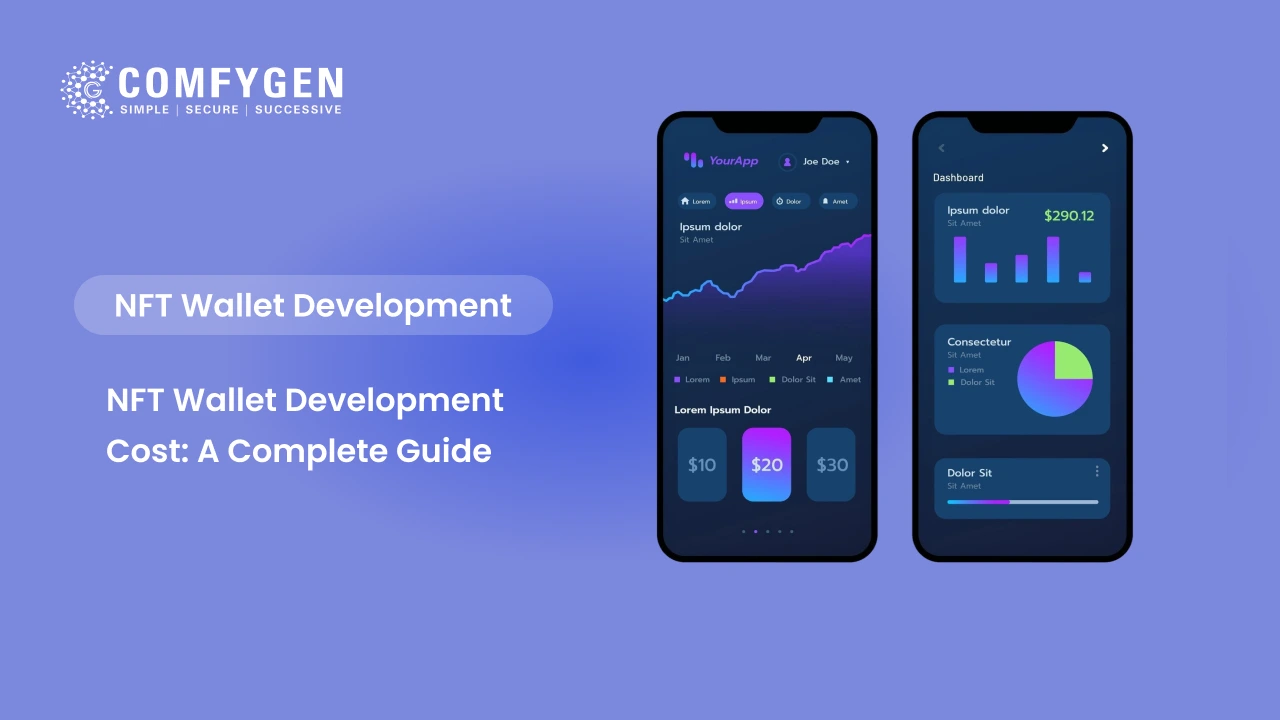How To Develop A Dating App From Scratch?
If you’re planning to develop a dating app, now is the perfect time. People no longer need to ask their friends or relatives to set them up. They are no longer required to go out with the hope of finding someone interesting and attractive. Instead of all these efforts, they just need to browse through the vast pool of profiles of their potential matches, text them, and set up a date.
With the advent of online dating sites and apps, the dating scenario has changed a lot in the last decade. Millions of users are actively using these apps today to find their perfect match.
The advantages of modern dating over traditional dating have generated hype for dating app development. Take a look at the how to make a dating app from scratch guide and know about all the aspects of the dating app including the market’s current state, its key features, types and development process with monetisation tips.
Insightful Stats on the Dating App Market
- In 2021, the global online dating app market was valued at USD 7.55 billion and is said to be increasing at a CAGR of 12.65% during the prediction period.
- Online dating services are expected to generate $3.7 billion in revenue globally via paid subscriptions.
- In terms of dating app development, the USA has the highest market penetration rate of 15.7 percent with a market size of USD 829M, generating the greatest revenue worldwide.
Types Of Dating Apps
Here’s a list of the types of dating apps. Each type targets specific user needs and demographics, making the app more appealing to its audience:
1. Swipe-Based Dating Apps
These apps, like Tinder, focus on quick and straightforward matching through a swiping mechanism. They are ideal for casual dating and are perfect examples of a dating app with high user engagement.
2. Niche Dating Apps
These target particular user groups or interests, including faith-based communities, animal enthusiasts, or experts in a specific field. Creating such applications is an excellent strategy for reaching distinct audiences while determining how to make a dating app that is memorable.
3. Compatibility-Based Apps
Dating applications such as eHarmony or OkCupid utilize comprehensive surveys and algorithms to match users according to compatibility ratings. This variety is perfect for people curious about building a dating app that emphasizes lasting relationships.
4. Video Dating Apps
These Dating apps emphasize virtual connections through video profiles or live video chats, making the dating experience more interactive. They’re perfect for individuals exploring how to make a dating app with engaging features.
5. LGBTQ+ Inclusive Dating Apps
Dating apps like Grindr or HER cater to the LGBTQ+ community, offering features and environments tailored to their specific needs. These apps serve as a valuable example for developers looking to build a dating app for inclusivity.
6. Gamified Dating Apps
Gamification elements such as quizzes, challenges, or games within the app enhance the enjoyment and engagement of these applications. When you decide to create a dating app, incorporating gamification can help keep users engaged.
7. Serious Relationship Apps
These apps, like Hinge, aim at individuals looking for meaningful connections rather than casual dating. They’re designed for users interested in long-term partnerships, a crucial aspect when brainstorming about a dating app for a mature audience.
8. Social Networking Dating Apps
Some dating apps blend dating and social networking, allowing users to connect with mutual friends or expand their network before dating. This model can inspire those wondering to build a dating application with a community-centric approach.
9. Matchmaker-Assisted Apps
These apps involve human intervention, where professional matchmakers assist users in finding matches. For entrepreneurs exploring how to develop a dating app, this unique concept can provide a personal touch.
10. Event-Based Dating Apps
Event-centric apps help users meet potential partners during group activities or local events, combining online dating with real-life interactions. They are a great option for those wanting to develop a dating app that facilitates organic connections.
Key Features of a your Dating App
Create a dating app requires the integration of features that appeal to users while ensuring the app is enjoyable, secure, and user-friendly. By including these features in your custom dating app, you’ll ensure it caters to user expectations while standing out in a competitive market.
Here are 10 essential features that every dating app must include
1. User Profile Creation and Management
The foundation of any dating app is a detailed and customizable user profile. Users should be able to upload photos, add a bio, and list preferences or interests. This feature is essential when you plan to make a dating mobile app from scratch, as it allows users to express themselves genuinely, enhancing their chances of discovering compatible matches.
2. Smart Matching Algorithms
Integrating advanced algorithms that analyze user preferences and behaviors helps provide highly compatible match suggestions. This is a significant feature to include when deciding to create a dating app from scratch that delivers a tailored user experience.
3. Swiping and Browsing
An intuitive swiping mechanism makes browsing through profiles engaging. Users should be able to like, dislike, or skip profiles effortlessly. Gamified swiping is essential to develop a dating app that keeps users hooked.
4. Location-Based Matching
Adding a feature to find matches nearby using geolocation services is a modern must-have. It’s a great way to build a dating app that feels immediate and relevant. Develop a dating app like Tinder popularized this key feature, making it an industry standard.
5. Chat and Messaging
Secure and real-time messaging is very essential. Features like read receipts, typing indicators, and voice or video messages enhance the user experience. This is a key factor when considering how to create a dating app with engaging communication options.
6. Profile Verification and Safety Measures
To gain user trust, integrate robust verification methods such as photo verification or linking to social media accounts. This ensures authenticity and is critical when deciding to make a dating app that users can trust.
7. Advanced Filters and Search
Allowing users to filter matches based on criteria like age, interests, or location adds a personalized touch. This feature is often highlighted as essential when exploring how to make a dating app tailored to diverse user preferences.
8. Push Notifications
Keeping users engaged through timely notifications about new matches, messages, or updates ensures active participation. Notifications are a great way to create your own dating app that keeps users coming back.
9. In-App Purchases and Subscription Plans
Monetization is key for the success of your app. Offer premium features like unlimited swipes, visibility boosts, or advanced analytics as part of subscription plans. This aligns well with the business model of many apps and is a vital component of dating app development software.
10. Reporting and Blocking Users
It is a useful feature that allows the user to address any kind of inappropriate behavior and avoid others from facing the same. Thus core feature let the user prevent any undesirable communication and offer a respectful environment, keeping the user engaged.
Top Popular Dating Apps Globally
Having grasped the idea of dating apps, along with their different types and features, let’s delve into the top dating apps dominating the market. These applications offer numerous features, from customized features to live chat sessions, attracting a wide audience.
| Top Popular Dating Apps | Downloads |
|---|---|
| Tinder | 100 Million+ |
| Bumble | 50 Million+ |
| Hinge | 10 Million+ |
| Okcupid | 10 Million+ |
| Match.com | 50 Million+ |
| Eharmony | N/A |
| Grindr | 50 Million+ |
| HER | 1 Million+ |
| Christian Mingle | N/A |
| Muslima | N/A |
| Elite Singles | N/A |
| Ashely Madison | 1 Million+ |
| Plenty Of Fish | 50 Million+ |
| Coffee Meets Bagel | 10 Million+ |
| Zoosk | 10 Million+ |
How To Make a Dating App
The dating app industry has experienced considerable expansion, driven by the rising demand for easy and creative methods to bring individuals together. For companies and entrepreneurs, creating a dating app presents a profitable chance to enter this growing market.
However, develop a dating app is complicated and requires a solid grasp of market demands, user behaviors, and appropriate technology. If you’ve been curious about how to build a dating app that is unique, this guide will walk you through each step of the process.
Ideation and Planning of Your Dating App
The process of develop a dating app from scratch starts with a strong concept and careful preparation. Performing thorough market analysis is essential for knowing current trends, recognizing competitors, and identifying user preferences.
Study top dating apps to comprehend their user appeal and identify potential market gaps that your app might address. For example, applications such as Tinder target casual dating, whereas eHarmony highlights serious relationships. Identifying your niche from the start will enable you to effectively reach a particular audience.
Understanding your users’ pain points is another critical step. What challenges do people face with existing dating apps? Common problems consist of fraudulent profiles, restricted matching algorithms, and insufficient privacy.
By tackling these issues, you can develop a unique selling point (USP) for your app. For instance, incorporating advanced verification processes or compatibility-based matching can give your app an edge. This is essential when considering to dating app that truly resonates with users.
A clear and actionable plan is vital. Define your app’s goals, features, and revenue model. Will it follow a subscription model, be supported by ads, or utilize a freemium approach? Make a detailed strategy and distribute resources efficiently. Having a thorough plan established will provide you with a solid base to progress.
Deciding Features
Features are the heart of any dating app. To build a dating app like Tinder that users love, you need to focus on functionality that meets their expectations while offering something fresh. Start by listing essential features such as user profiles, swiping or matching functionality, and a secure chat system. In addition to the fundamentals, consider creative features that can distinguish your app.
For example, utilizing artificial intelligence (AI) for improved matchmaking can greatly boost the user experience. AI algorithms are capable of examining user preferences, behaviors, and interactions to recommend suitable matches.
Likewise, incorporating video calling functionalities can provide a more engaging and personalized method for users to interact. Location-based matching is a preferred feature that enables users to discover possible matches in their locality. These are key factors to keep in mind when learning how to build a dating app from scratch that attracts the market’s interest.
Focusing on user safety is also necessary. Attributes such as profile verification, reporting tools, and secure messaging can enhance trust between users. By focusing on features that address user issues and boost engagement, you’ll establish the foundation for a thriving dating app.
Develop a Dating App for User-Friendly
Design plays a key role in attracting and retaining users. The interface of a dating app needs to be easy to understand, attractive, and simple to use. While creating the app, consider the experience you aim to deliver. Users need to navigate the app smoothly, from setting up profiles to exploring matches and initiating chats.
To accomplish this, collaborate with expert designers who know the principles of user-centered design. The design must be tidy and simple, allowing straightforward access to essential functions such as swiping, messaging, and profile adjustments.
Utilize colors, typography, and visuals that inspire feelings of trust and community. Features such as badges or progress tracking in gamification can enhance the app’s engagement. These steps are essential for determining how to create a dating app that users will appreciate.
A vital element of design is responsiveness. Make sure the app functions effectively on different devices and screen dimensions. Before finalizing the design, create a minimum viable product (MVP) to assess user feedback.
Prior to completing the design, develop a minimum viable product (MVP) to gauge user feedback. An MVP enables you to collect feedback on the design and implement essential changes prior to extensive development.
Selecting the Right Technology Stack for Your Dating App
The technology stack you select will influence the performance, scalability, and security of your dating application. Frontend frameworks such as React Native and Flutter are superb options for developing cross-platform applications since they enable simultaneous dating app development for both iOS and Android. These frameworks provide engaging and interactive user interfaces, guaranteeing a smooth experience for users.
For the backend, strong technologies such as Node.js or Django are perfect for handling user data, matchmaking algorithms, and server-side operations. The database must be both secure and scalable, with alternatives such as Firebase or MongoDB providing effective data management features.
Furthermore, think about utilizing external APIs for functionalities such as location tracking (Google Maps API) or messaging within the app (Twilio). Developing a dating app with contemporary features requires these integration.
Safety is a primary concern in dating app software development. Utilize advanced encryption methods to safeguard user information and guarantee adherence to privacy laws such as GDPR. Investing in the right technology stack will lead to a dependable and efficient app.
Collaborating with Skilled Developers
Creating a dating app requires technical skills and knowledge of the industry. Collaborating with skilled mobile app developers can simplify the process and guarantee a top-notch product. Search for a mobile app development team or firm that focuses on creating dating applications. They need to have a demonstrated history and the capability to incorporate advanced features such as AI matchmaking and instant messaging.
When working with mobile app developers, express your vision clearly. Submit a detailed summary describing your dating app’s objectives, functionalities, and design choices. Frequent updates and transparent communication will guarantee that the final product meets your expectations.
Selecting the right dating app development partner can significantly impact the success of your dating app. This is an essential phase in determining how to create a dating app that aligns with your business objectives.
MVP Development
Developing a minimum viable product (MVP) is a tactical move in the creation of a dating app. An MVP consists solely of the essential features needed to assess your app’s market viability. These functions generally comprise user signup, profile development, matching, and communication.
Evaluating the MVP with actual users enables you to collect important insights regarding the app’s performance and user experience. This information can assist you in enhancing the app prior to releasing the complete version.
An MVP lowers both dating website development expenses and duration, enabling you to quickly enter the market and adjust according to user feedback. It’s an essential stage in understanding how to build a dating application effectively.
Application Testing
Quality assurance is an essential step in the development process. Testing guarantees that your app runs efficiently on various devices, operating systems, and network scenarios. Thorough testing must include elements such as functionality, speed, security, and user experience.
Hire expert testers to find and resolve bugs, glitches, and performance problems. Carry out beta testing with real users to collect feedback on the app’s functionality and appeal.
Testing additionally assists in confirming that your app complies with the guidelines of app stores, enhancing the likelihood of approval upon submission. This stage is essential and cannot be overlooked when learning to successfully create a dating app.
App Launch and Marketing
When your dating app is completely developed and tested, it’s time for the release. Send your application to the Google Play Store and Apple App Store, making sure it complies with their specific guidelines. The approval procedure might require some time, so schedule your launch appropriately.
Marketing is essential for gaining the attention of the users of your application. Use a combination of digital marketing techniques like social media campaigns, collaborations with influencers, and search engine optimization (SEO).
Emphasize your app’s distinct characteristics and advantages to generate excitement within your target market. Providing initial promotions or discounts can also motivate users to test your app. Effective marketing guarantees that your attempts in creating a dating app lead to measurable outcomes.
Monetization Strategy For Dating Apps
Just like other mobile apps, investing in dating app development solutions also generates revenue through various monetization methods, and some of the most common strategies are mentioned below:
In-App Subscriptions
78% of dating apps offer both freemium and premium models to their users, providing basic features for free while charging for advanced features. Most users are ready to pay for subscriptions, making it a primary method of generating revenue.
Convenience and value are the two main factors that influence users to pay for special features. Top dating apps offer bonus features in return for weekly, monthly, or annual fees.
Categorising sought-after features into tiers is one of the most commonly used methods to monetise a dating app, as it initiates regular payments. A three-tiered system for free, standard, and premium accounts is one of the strategies utilised by the big players in the dating industry, like Tinder, Match, Bumble, and Hinge. You can also make a dating app from scratch following this model.
Once the features are categorised into tiers, now it’s time for you to decide on an app pricing strategy that can make users stay with your subscription plan for a longer time.
Advertisements
Advertising is the most traditional yet familiar way to market a dating app that works on a freemium model. In this way, users must watch the ads to continue browsing on their app without paying an additional fee. Generally, there are three categories of ads.
Standard ads
Standard ads are shown to every app user, irrespective of their age, interest, or gender. Dating apps earn money for every view, click, or transaction a user makes. Subscribers are obliged to watch every ad to continue using the platform unless they opt for an ad-free version. Ads are a common way for popular platforms like Tinder to earn money from apps. Banners, videos, surveys, etc., are some types of in-app ads.
Custom Ads
Based on demographics, buyer interactions, and in-app behaviours, custom ads will utilise user profiles to encourage specific themes and topics. You can also offer in-app advertisements as a service in your dating app. For instance, Grindr generates a good profit by targeting the LGBTQ community through marketing campaigns based on budget, ad performance, and geo-targeting.
Some apps provide account representative support to help marketers build even more specialised, highly targeted, and optimized in-app advertising solutions, for businesses with more money to spend.
Reward-based Ads
Reward ads offer temporary access to bonus features in return for watching the ads. This type of advertisement is mainly seen on gaming platforms, and on dating apps, reward-based videos can be targeted successfully. Users are given incentives, like extra points or temporary subscriptions to watch each video. It works beyond just generating advertising revenue; it also increases the chances of freemium users upgrading to premium users.
One-time Purchases
One-time purchases are an excellent opportunity for users to customize their app user experience by choosing and applying the features they want to add. These kinds of models allow users to retain control over how much they can spend without regularly making payments. Most of the top dating apps, like Hinge, Tinder, Bumble, and eHarmony offer one-time purchases.
One-time purchases are one of the most beneficial revenue models for dating apps, as they allow them to earn additional income from free account users. However, with time, some dating apps are replacing one-time purchases with the proper structured subscription models. However, the majority of dating apps continue to offer OTPs.
Monetisation through dating apps via OTPs boosts profit for users who want to take advantage of “pay-as-you-use” features such as unlimited swipes, virtual gifting, and swipe likes.
If the extra expense adds enough value, providing consumable features like this, together with premium subscription choices, can potentially be a successful app monetization strategy. For example, premium users have a high chance of getting their match by purchasing add-ons such as super likes.
If users are given access to diverse non-commitment options, they will feel secure in carefully choosing the feature they want to add and can design their own in-app experience. Thus, providing one-time IAPs can be a very effective way for both publishers and consumers to profit from one another.
Emerging Trends In Dating App Development
As technology changes, relationship apps are adding new features to keep up with the times and meet user needs. Here are five new trends in the making of dating apps that will affect the future of the business:
1. Blockchain Technology for Enhanced Security
Blockchain is transforming the dating app scene by offering advanced security and transparency. It lets you store data safely, protecting your privacy and stopping people from getting in without your permission. Blockchain development also allows decentralized identity verification, reducing the prevalence of fake profiles and scams.
Users can be sure that their data is safe with this technology, which is very important for dating apps today. This trend addresses users’ worries about safety and brings in people who are better at using technology.
2. AI-Powered Matchmaking
Artificial Intelligence is revolutionizing how dating apps link people. AI algorithms study user preferences, behavior, and interactions to offer personalized match ideas. This technology enhances the likelihood of successful matches by understanding subtle patterns that people might miss. Some apps also use AI to identify and prevent inappropriate messages, providing a safer user experience.
3. Augmented Reality (AR) Features
AR is being integrated into dating apps to create more immersive encounters. For example, users can attend virtual dates in AR environments, making online exchanges feel more personal. This technology also allows users to preview potential date sites or share interactive activities, adding a unique touch to their dating experience.
4. Gamification for Engagement
Gamification is being used to develop a dating apps more interactive and interesting. Features like leaderboards, achievement badges, and daily challenges encourage users to engage actively. These factors transform the dating process into a fun and rewarding experience, increasing user retention and satisfaction.
6. Geolocation and Hyperlocal Ability
Geolocation and hyperlocal features have redefined how quickly users can meet possible matches nearby. By allowing users to find connections in their near vicinity or at specific events, these make it easier to transition from digital interactions to real-life meetings. Whether users are looking for someone at a festival or a local café, hyperlocal tools enable fast in-person connections, offering a blend of convenience and immediacy that appeals to modern daters.
How Much Does It Cost to Make a Dating App?
When considering the cost to develop a dating app, multiple factors come into play, including the complexity of features, the platform (iOS, Android, or both), and the region where development is carried out.
On average, the cost to develop a dating app ranges from $20,000 to $150,000, depending on the app’s functionality and scope.
For entrepreneurs wondering how much does it cost to start a dating app, the answer varies based on the app’s goals and the level of customization required. Below, we delve into the factors influencing the cost and their estimated budgets.
Factors Influencing the Cost of Dating App Development
| Factor Affecting Cost | Average Cost Range |
|---|---|
| App Platform (iOS, Android, or both) | $10,000 – $30,000 |
| App Features (Basic or Advanced) | $15,000 – $50,000 |
| UI/UX Design | $5,000 – $15,000 |
| Backend Development | $10,000 – $40,000 |
| Third-Party Integrations (e.g., Payment Gateways, Chat APIs) | $3,000 – $10,000 |
| Testing and Quality Assurance | $5,000 – $10,000 |
| Developer’s Location | $20 – $150/hour (regional variation) |
| Marketing and Launch | $5,000 – $20,000 |
| Maintenance and Updates | $2,000 – $5,000/month |
Get a Groundbreaking Dating App At Comfygen
To develop a dating app, collaborating with a top-rated dating app development company such as Comfygen is crucial. Our team of specialists is dedicated to tackling all the develop a dating app errors to steer clear of, making certain that your app is designed, built, and launched smoothly. Through thorough market analysis to seamless integration of advanced analytics, we pay attention to every detail to match your vision and the expectations of users.
The team of mobile app developers and designers at Confygen emphasizes user-centered UI/UX design, creating an intuitive interface that engages users immediately upon installing your app. Whether it’s reducing expenses to develop an outstanding dating app or ensuring the app is culturally suitable for different markets, Comfygen offers a tailored solution that guarantees your app for success.
The Bottom Line
Dating app development is an exciting industry to invest in. More people are adopting online dating apps rather than traditional methods of dating. The market is growing rapidly and now seems like a good time to enter the market.
Play Store or App Store is filled with thousands of dating apps that are categorised based on their niche, geolocation, matchmaking system, etc. Though the market is packed, there are still some opportunities yet to be explored.
You do not need to apply all the monetisation strategies you have been given on your dating app. You can experiment with different approaches to ensure that your app is reaching a wider audience and selling more features. The strategy that will suit you and give you the best result will depend on your marketing campaigns and target audience.
FAQ
How much does it cost to start a dating app?
The cost to start a dating app varies widely depending on the complexity of features, platform, and dating app development team location. Typically, the development cost ranges between $20,000 to $150,000, with additional expenses for marketing and maintenance.
What features should a dating app have?
- User profiles
- Matching algorithms
- Chat and messaging functionality
- Profile verification
- Advanced filters for preferences
- Additional features like video calls, AI-based matchmaking, and location-based matching can make your app more appealing.
What is the timeline for developing a dating app?
Can I develop a dating app on a small budget?
How do I monetize a dating app?
- Subscription plans (e.g., premium memberships)
- In-app purchases (e.g., boosts or super likes)
- Advertisements
- Affiliate marketing
Which platform should I target first: iOS or Android?
How do I ensure the safety and privacy of users?

Mr. Saddam Husen, (CTO)
Mr. Saddam Husen, CTO at Comfygen, is a renowned Blockchain expert and IT consultant with extensive experience in blockchain development, crypto wallets, DeFi, ICOs, and smart contracts. Passionate about digital transformation, he helps businesses harness blockchain technology’s potential, driving innovation and enhancing IT infrastructure for global success.

